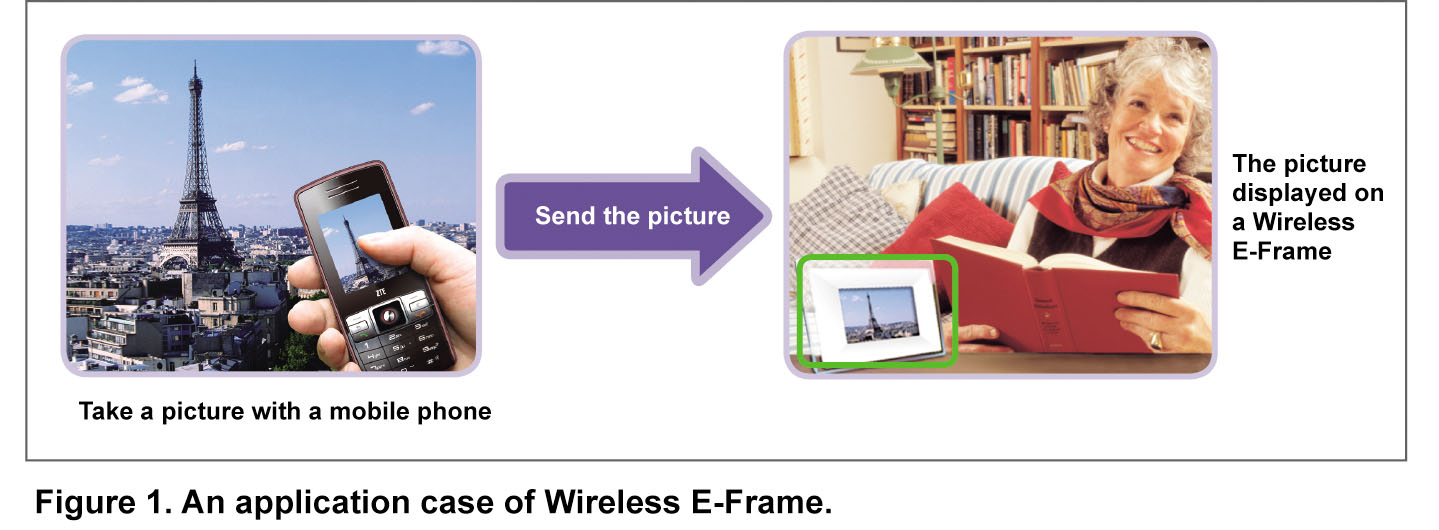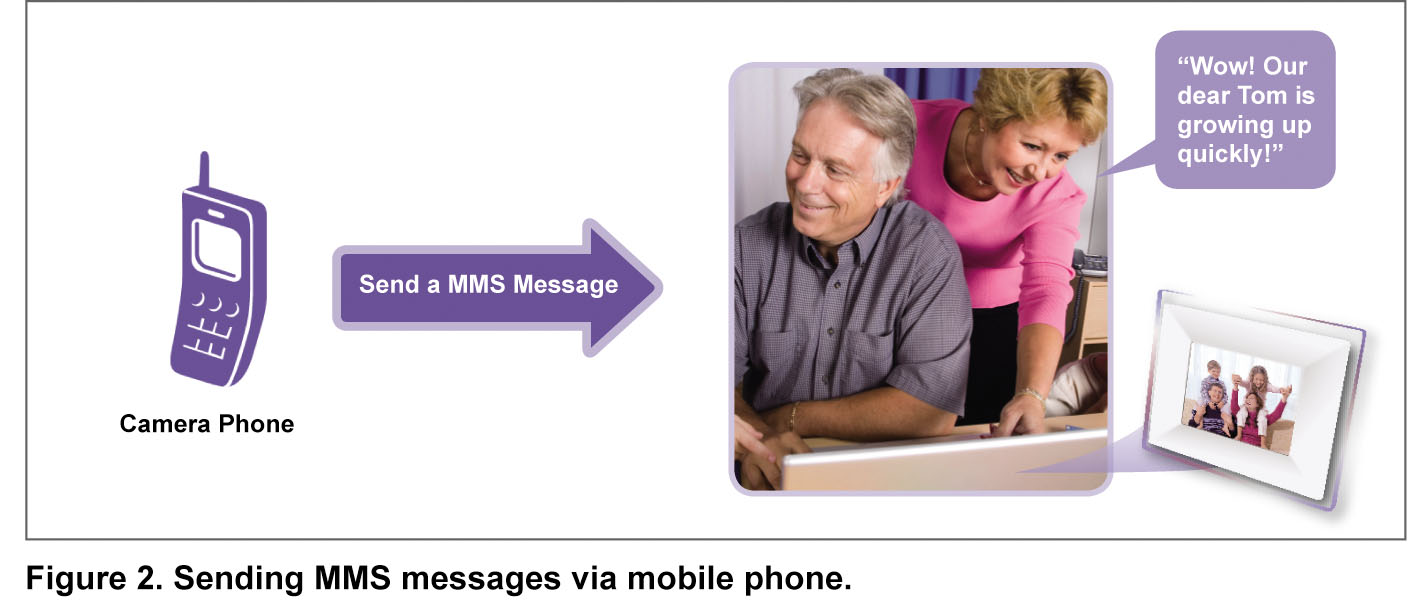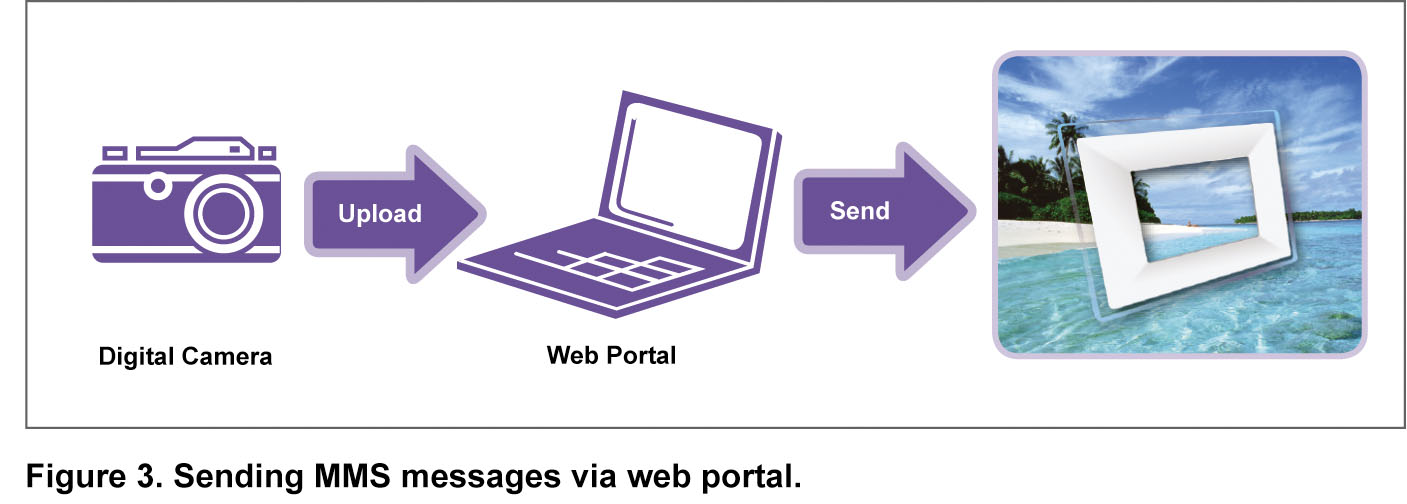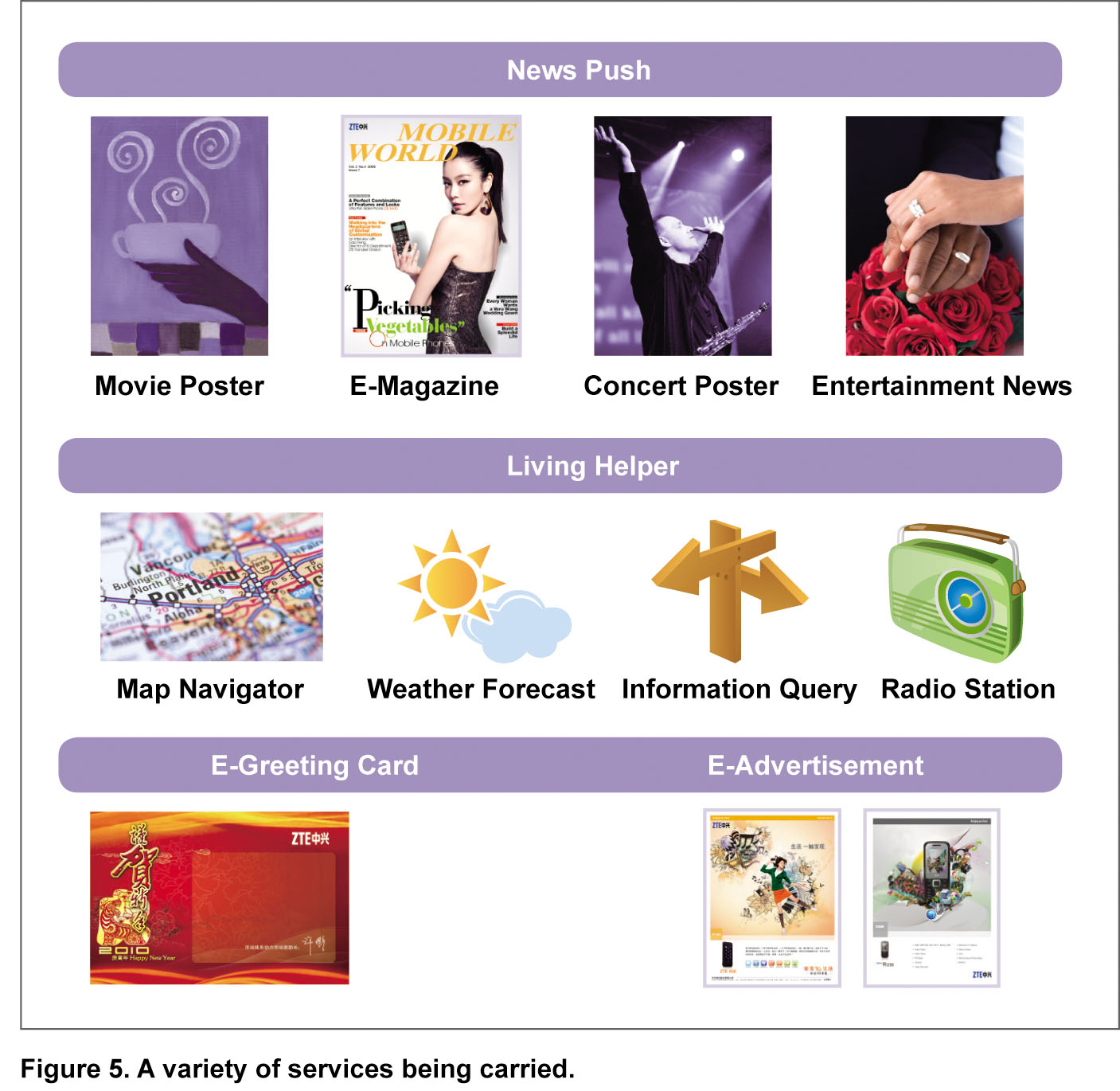Wireless E-Frame: See and Share
In today’s interconnected world, people choose to study, work, or travel away from home. It is therefore not uncommon for parents and children to live in different locations, and the need for distant communication among family members has grown. Parents want to know how their children are getting along with their work or studies abroad; grandparents living in their hometown and perhaps without computer knowledge look forward to hearing from their grandchildren; and family members keep each other up to date by sharing holiday pictures.
The Wireless E-Frame has been developed in response to these needs. As with traditional digital frames, the Wireless E-Frame is a small electronic product that displays pictures and information through an LCD screen. It uses an embedded wireless electronic communication module to receive pictures or MMS messages from a mobile phone or a web portal at any time. These can be browsed through and played automatically. You might be sightseeing in Paris, taking in the impressive Eiffel Tower. You snap a picture on your mobile phone and send it to your grandmother thousands of miles away with a thoughtful message attached (see Figure 1).

ZTE’s Wireless E-Frame Solution
ZTE’s Wireless E-Frame is an end-to-end solution that allows anyone to send pictures from a camera phone or digital camera to the Wireless E-Frame. It enriches message services, increases MMS traffic flow, and generates more revenue for operators.
Friendly use experience
The Wireless E-Frame supports two use modes: sending MMS via mobile phone (see Figure 2) or via web portal (see Figure 3). Pictures can be taken with a mobile phone and then sent to a Wireless E-Frame via MMS. The pictures can be shared in real time with family and friends. Although phone cameras are convenient, the picture resolution is often limited. To enhance user experience, the Wireless E-Frame also supports sending high-resolution pictures via a web portal. Pictures can be taken with a digital camera and uploaded to a dedicated web portal. After some touchups, they can then be sent to the Wireless E-Frame terminal.


Versatile and fashionable E-Frames
As well as having traditional digital frame functions, ZTE’s Wireless E-Frame can receive and display multimedia messages. It has a USB port for accessing data on a hard disk, and a SIM card slot for receiving pictures through wireless networks. It supports Wi-Fi Internet access, has a large 7-12 inch LCD screen, and supports a variety of picture display styles including auto play, replay, full screen, split screen, and additional picture frames. Audio and video play (repeat mode, file copy, delete) are also supported and background music can be set. The Wireless E-Frame is GPRS enabled for receiving and displaying multimedia messages, and has calendar, clock, weather forecast, and FM broadcasting functions.
Wireless E-Frames can be customized to meet user needs and preferences. They are not only real-time picture communication tools but also fashionable pieces of home décor (see Figure 4).

Easy-to-use web portal
ZTE’s Wireless E-Frame provides a web portal for end users. Photos taken with a digital camera can be uploaded to the portal—where text can be inserted, editing can be done, or audio and video content can be added to create personalized content. The final message can then be sent to the Wireless E-Frame. The web portal makes it possible for users to share high-resolution photos through wireless networks, and create customized content.
Featured functions
To enhance user experience, ZTE’s Wireless E-Frame also delivers featured services. It supports partial and resumable downloading so that large-sized photos transmitted from the web portal are delivered completely in a low-rate GPRS network. Moreover, it has a “click and send” plug-in on the web page. After installing the plug-in package, users simply right-click their favorite pictures, audios, or videos and send them to the E-Frame when browsing a web page.
Potential in the Infotainment Era
Wireless E-Frame provides better visual experience than mobile phones, and will be attractive to families. It may also be adopted by newspapers, greeting card companies, audio magazines, movie distributors, or advertisers as a new way of delivering content (see Figure 5). The infotainment potential of the Wireless E-Frame is certainly promising.

In modern society, people are on the move. China’s floating population reached a record 211 million people in 2009, accounting for over 11.27% of the country’s total population. Its college students exceeded 20 million in 2009 (among which 6.1 million were graduates), and outbound travelers totaled 47 million. The potential user base for Wireless E-Frame is very large and diverse. Wireless E-Frame not only enhances photo communication for families, but also helps operators retain users, provide numerous information services, raise ARPU, and generate sustainable income streams.